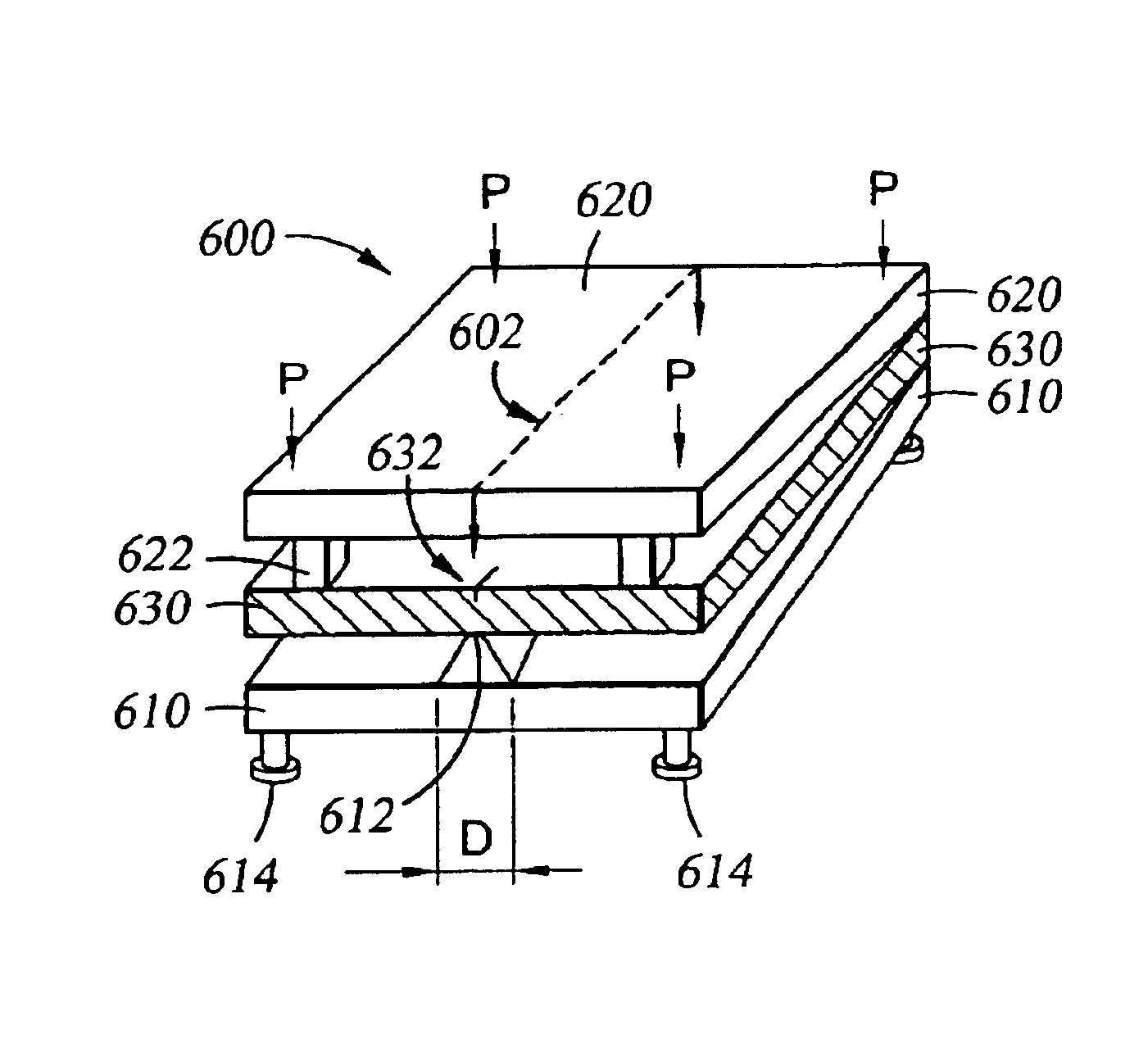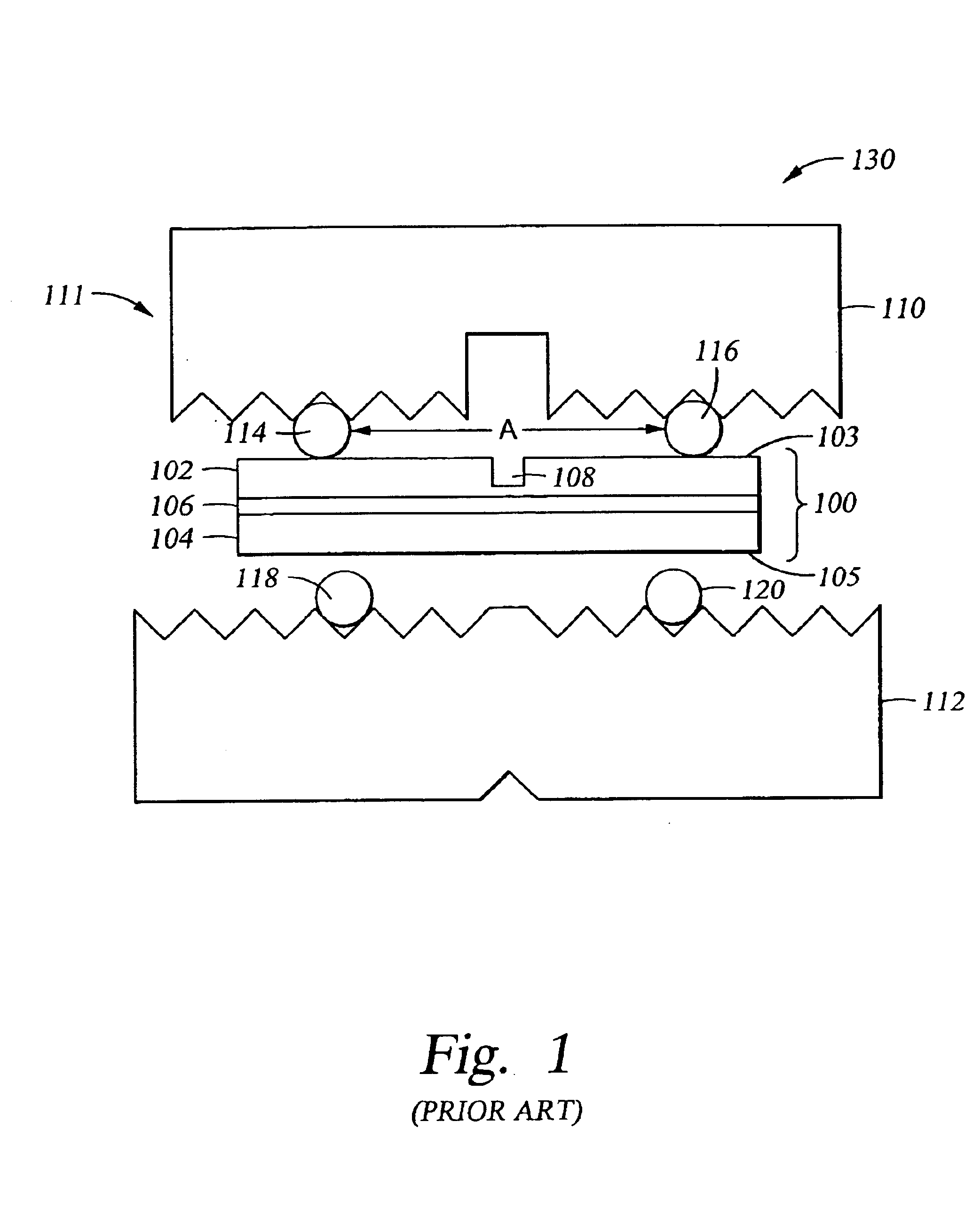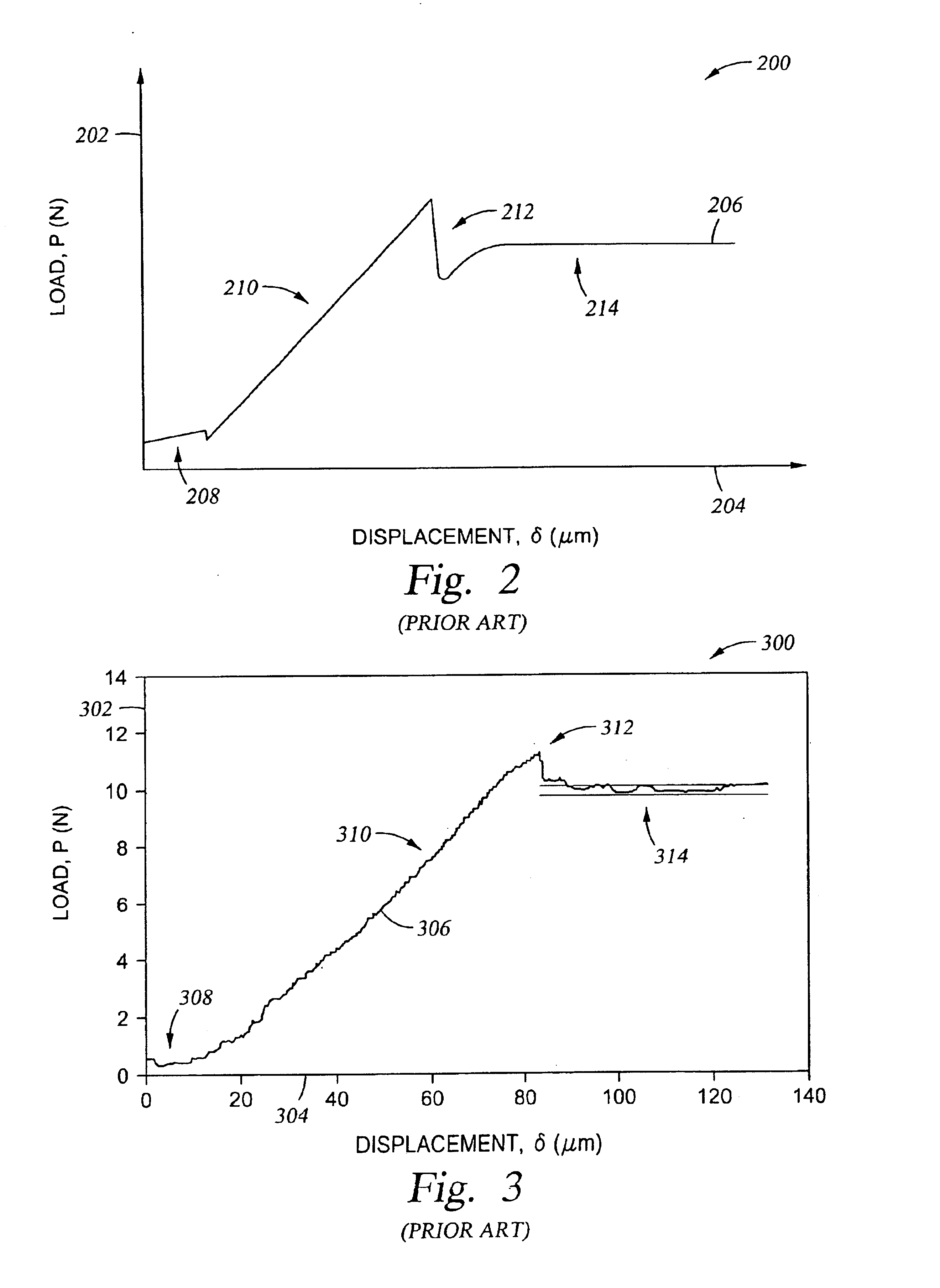Fixture used to prepare semiconductor specimens for film adhesion testing
a technology of film adhesion and fixation, which is applied in the direction of individual semiconductor device testing, semiconductor/solid-state device testing/measurement, instruments, etc., can solve the problems of notching steps, and reducing the number of polishing steps
- Summary
- Abstract
- Description
- Claims
- Application Information
AI Technical Summary
Benefits of technology
Problems solved by technology
Method used
Image
Examples
Embodiment Construction
[0048]As a preface to the detailed description, it should be noted that, as used in this specification and the appended claims, the singular form “a”, “an”, and “the” include plural referents, unless the context clearly dictates otherwise. When the term metal or metallic is used, it is understood that this includes metal alloys. Other terms important to an understanding of the invention are defined in context throughout the application.
[0049]For purposes of illustration, the sample preparation method is described below with reference to FIGS. 5A-5G.
[0050]FIG. 5A shows a cross-sectional side view of a first semiconductor structure 502 and a second semiconductor structure 504 which are used to prepare test specimens for four-point adhesion testing according to the method of the invention. First semiconductor structure 502 consists of a layer 506 of an additive material overlying a crystalline substrate 508. Second semiconductor structure 504 has the same structure as the first semicon...
PUM
| Property | Measurement | Unit |
|---|---|---|
| Length | aaaaa | aaaaa |
| Length | aaaaa | aaaaa |
| Radius | aaaaa | aaaaa |
Abstract
Description
Claims
Application Information
 Login to View More
Login to View More - R&D
- Intellectual Property
- Life Sciences
- Materials
- Tech Scout
- Unparalleled Data Quality
- Higher Quality Content
- 60% Fewer Hallucinations
Browse by: Latest US Patents, China's latest patents, Technical Efficacy Thesaurus, Application Domain, Technology Topic, Popular Technical Reports.
© 2025 PatSnap. All rights reserved.Legal|Privacy policy|Modern Slavery Act Transparency Statement|Sitemap|About US| Contact US: help@patsnap.com



